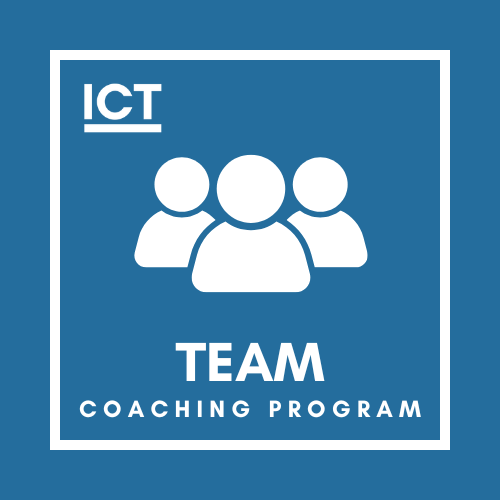Brian Icenhower explains why small real estate teams always fail by unpacking the financial, organizational & cultural reasons why teams must grow to succeed.
As controversial as it sounds, I’m going to say it: Small real estate teams always fail. I can already hear the objections, “Wait, what? What do you mean? There are small teams everywhere!” While that’s true, our extensive experience working with real estate teams through Icenhower Coaching & Training (ICT) shows a clear pattern. New clients often come to us already on the verge of failure. It’s not a question of if a small team will fail; it’s a question of when. And the reason for that is something we can break down and address.
Listen to The Brian Icenhower Podcast.
VIDEO: Why Small Real Estate Teams Always Fail
Understanding the Death Zone
To explain why small real estate teams fail, we need to examine what I call “The Death Zone.” Picture a chart with the team leader at the top, holding a flag and pushing forward. (Watch the video above to see my visual.) Initially, that leader is responsible for most of the team’s production. Beneath them are a few agents producing far less. As those agents gradually increase their production, the goal is for the leader to step back from production while the team scales upward.
But the problem lies in the gray shaded area — the Death Zone. This is where most real estate teams falter. Generally, teams hit this zone somewhere between 80 and 150 units of production annually, depending on factors like market location and price points.
-
Quick View
Team Coaching Program
$1,250 / monthThe Team Real Estate Coaching Program is for smaller teams looking for internal structure, leverage and leadership.
Why Teams Fail in the Death Zone
What makes the Death Zone so treacherous? It’s simple: the team leader is doing two jobs simultaneously. They’re not only maintaining high-level production to keep the team afloat, but they’re also expected to manage, recruit, train, and onboard agents. This dual role quickly becomes overwhelming, causing stress, resentment, and ultimately failure.
Common problems that occur in the Death Zone include:
Lack of Time: The team leader doesn’t have time to handle agents’ problems, provide training, or engage in recruiting efforts.
Resentment: Leaders often grow frustrated with agents for not performing as expected or for requiring too much attention.
Limiting Beliefs: Leaders convince themselves they don’t need to recruit or expand until they perfect the operations of their existing team, which only halts growth.
Pushing Through the Death Zone
The benefits of pushing past the Death Zone are tremendous. Once a team surpasses around 20 agents, everything changes. Suddenly, a pull effect replaces the push. Instead of constantly seeking recruits, agents start coming to you. Why? Because a larger team creates diversity and momentum.
Diversity and Its Benefits
When you have a wide range of agents with various backgrounds and specialties, it becomes easier to attract new members who fit within those diverse niches.
For example:
Gender Diversity: A team made up entirely of women may struggle to attract male agents, and vice versa. The same applies to age and experience level.
Lead Generation Style: A team known only for cold-calling may have difficulty attracting referral-based agents, and a referral-based team may struggle to recruit hardcore prospectors.
Experience Levels: Teams with only hungry, young agents often find it difficult to attract seasoned veterans.
The larger and more varied your team, the more inviting it becomes to different types of agents. And that’s crucial for scaling beyond the Death Zone.
If you don’t commit to growing past the Death Zone, you’ll always be stuck doing double duty — juggling high-level production and managing a small, unstable team.
Brian Icenhower
Additional Income Sources
Moving past the Death Zone and growing a substantial team opens the door to a host of additional income streams:
Mortgage Marketing Service Agreements: Agreements that pay you $5,000 to $10,000 monthly.
Joint Ventures: Partnerships with mortgage companies or title companies to generate additional revenue.
Property Management & Insurance: New business opportunities become accessible when you’re a big player.
You also gain the ability to attract talented local leaders to run these ventures for you, providing them with a source of income beyond sales commissions.
Resilience Through Scale
Larger teams are resilient. If a team of 20 agents loses three or four members, it’s barely noticeable. But if a small team loses just a few agents or one key admin, it’s catastrophic. A single winter season with low production can devastate a small team. The only way to protect your business from these inevitable bumps in the road is to grow quickly and push past the Death Zone.
Sprinting Through the Death Zone
Imagine the Death Zone as a line of hot coals. If you walk slowly, your feet will burn, and eventually, you’ll stop out of sheer frustration. Many small teams reach this point and regress, often because they don’t have the resources or motivation to keep moving forward.
The key to success is running across those hot coals. To succeed, you need to push through the Death Zone swiftly, reaching a point where your income streams are diversified, your team is resilient, and your workload decreases.
The Finish Line
The biggest mistake small real estate teams make is losing sight of the finish line. The prize at the other end of the hot coals is a high-performing, self-sustaining team where the leader makes exponentially more income while working less. To reach that point, you need to scale quickly, diversify your team, and grow beyond the Death Zone.
If you don’t commit to growing past the Death Zone, you’ll always be stuck doing double duty — juggling high-level production and managing a small, unstable team. Push through the Death Zone, reach the other side, and unlock the massive opportunities waiting for you.




















